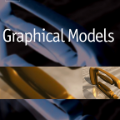This work develops a framework to create meshes with user-specified homology from potentially dirty geometry by coupling background grids, persistent homology, and a generalization of volume fractions. For a mesh with fixed grid size, the topology of the output mesh changes predictably and monotonically as its volume-fraction threshold decreases. Topological anti-aliasing methods are introduced to resolve pinch points and disconnected regions that are artifacts of user choice of grid size and orientation, making the output meshes suitable for downstream processes including analysis. The methodology is demonstrated on geographical, mechanical, and graphics models in 2D and 3D using a custom-made software called Tusqh. The work demonstrates that the proposed framework is viable for generating meshes on topologically invalid geometries and for automatic defeaturing of small geometric artifacts. Finally, the work shows that although subdividing the background grid frequently improves the topological and geometrical fidelity of the output mesh, there are simple 2D examples for which the topology does not converge under refinement for volume-fraction codes.
翻译:暂无翻译




